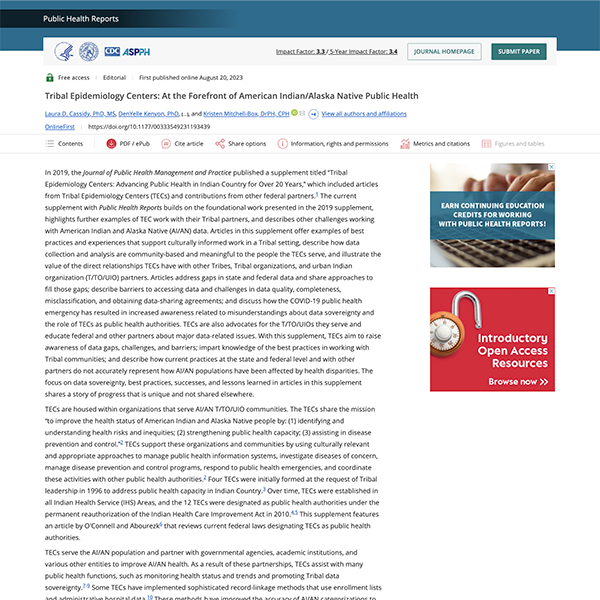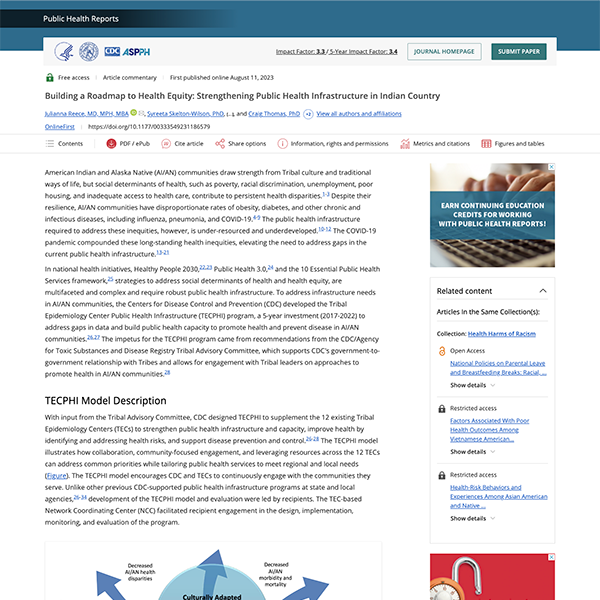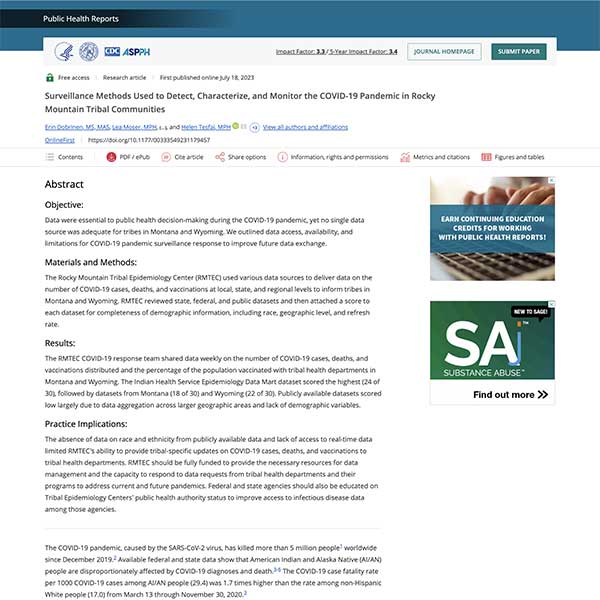
Sage Journals
In 2019, the Journal of Public Health Management and Practice published a supplement titled “Tribal Epidemiology Centers: Advancing Public Health in Indian Country for Over 20 Years,” which included articles from Tribal Epidemiology Centers (TECs) and contributions from other federal partners.
Laura D. Cassidy, PhD, MS, DenYelle Kenyon, PhD, Jamie Ritchey, PhD, MPH, Delores Becenti, BS, Aurimar Ayala, MPH, Tracy Prather, MHA, Kristen Mitchell-Box, DrPH, CPH
August 20, 2023




